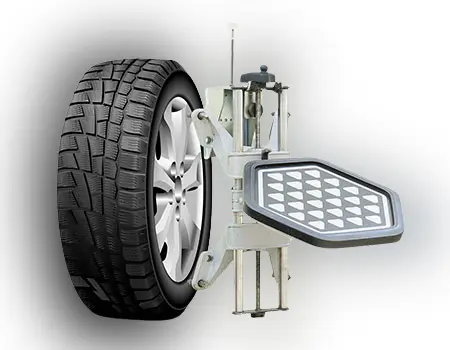Tires are an essential component of any vehicle, serving as the only point of contact between the vehicle and the road. As such, their longevity and overall condition directly impact driving safety and performance. In this article, we will explore how long do tires last and factors influencing the lifespan of tires, signs indicating their wear, and steps to extend their durability.
Factors Affecting Tire Lifespan
Following factors are responsible for deciding how long do tires last?
Driving Habits

Aggressive driving, excessive speeding, and abrupt braking can significantly reduce tire life. Maintaining a steady speed and avoiding sudden maneuvers can promote longevity.
Road Conditions

Road condition also decides how long do tires last? Driving on poorly-maintained roads or rough terrains can cause rapid tire wear. Potholes, debris, and sharp objects increase the risk of damage.
Tire Pressure

As per experts in the field, maintaining the correct tire pressure stands out as the paramount factor in guaranteeing an extended lifespan for every tire. When adhered to as recommended, tires with optimal pressure not only enhance safety on the road but also contribute to improved fuel efficiency and overall longevity of the tires.
Load

Excessively heavy loading amplifies the wear and tear experienced by your tires, posing potential dangers to both you and your loved ones. There are instances where overloading can lead to tire bursts or complete tire failure, emphasizing the importance of avoiding such practices for the sake of safety on the road.
Wheel Alignment

Wheel alignment is a key factor to decide how long do tires last? Incorrect wheel alignment often goes unnoticed by many car owners, despite its significant impact on tire health. This issue has the potential to cause rapid and uneven wear, ultimately reducing the overall lifespan of the tires. Being aware of and addressing wheel alignment problems is crucial to ensure your tires’ longevity and optimal performance.
Signs of Worn-Out Tires
Identifying worn-out tires is crucial for safety. Look out for the following signs:

- Tread Depth: It is imperative to ensure that the tread depth on your tires never goes below 1/16 of an inch (1.6 millimeters). This minimum depth is essential for maintaining proper traction and safety on the road, especially in adverse weather conditions. Regularly checking and replacing tires with insufficient tread is vital to ensure optimal performance and prevent potential hazards while driving.
- Cracks or Bulges and Plugs: Inspect the sidewalls for visible tracks or cuts – distinct grooves that can be seen without any aid. Such signs may indicate a developing tire leak or, worse, an imminent blowout. Avoiding this situation is undoubtedly crucial for your safety on the road. Plugged tires also significantly impact the lifespan of the tire. While a proper tire plug can provide a temporary solution for small punctures, it’s crucial to note that plugs do not restore the tire’s original integrity.
- Vibration: While some vibration is normal, especially on poorly paved roads, excessive and abnormal vibrations may indicate an underlying issue. Even if the tire isn’t the direct cause of the vibration, prolonged exposure to it can lead to tire damage. If you experience persistent vibrations, particularly on smooth roads, it’s essential to have your car checked by a mechanic promptly to identify and address any potential problems.
- Uneven Tread Wear: Newer tires come with tread wear indicator bars, which gradually become visible as the tread wears down. These bars appear as flat rubber bars running perpendicular to the tread’s direction. If one or two of these bars are visible on a tire or if wet tracks indicate low tread depth, it’s time to perform the penny test for confirmation. If the bars are starting to show on any tire, it’s advisable to consult a mechanic or tire dealer for possible replacement.
How Long do Tires Last?
The lifespan of tires varies depending on factors like tire type, driving conditions, and maintenance. On average:
- All-Season Tires: Last for approximately 50,000 to 70,000 miles.
- Summer Tires: Have a shorter lifespan of around 25,000 to 40,000 miles.
- Winter Tires: Generally last for 20,000 to 30,000 miles.
Prolonging Tire Life
To maximize the lifespan of tires, consider these tips:
- Maintain Pressure: Maintaining the correct tire pressure is vital for tire longevity, fuel efficiency, and safety. Refer to your owner’s manual for the recommended PSI rates. Proper inflation enhances traction and reduces the likelihood of accidents. Regular checks ensure optimal performance. Embrace this simple practice to maximize tire lifespan and ensure a safer driving experience.
- Tire Rotation: The wear pattern of tires varies depending on their position on the vehicle, influenced by factors such as curb impacts, turning direction, and the vehicle’s drive type (front-wheel, rear-wheel, or all-wheel). Tire rotation is a crucial practice to address these differences in wear rate. Rotating tires left to right, back to front, and diagonally helps extend tire lifespan. It is recommended to rotate tires or seek expert assistance every 5,000 miles to maximize their longevity.
- Maintaining Tire Balance and Alignment: Tire balance and alignment are essential for optimal tire performance. Balancing tires during rotation addresses any imbalance that may cause vibrations and uneven wear. Regular tire alignment prevents steering problems and uneven wear due to road impacts. Following the manufacturer’s specifications and addressing alignment symptoms promptly are key to preserving tire life and ensuring a safe driving experience.
When to Replace Tires
Knowing when to replace tires is vital for safety. Consider the following guidelines:
- Tread Wear Indicators: Modern tires have built-in tread wear indicators that show when it’s time for replacement.
- Tire Age: Tires older than six years, regardless of tread depth, should be replaced due to aging components.
Recycling Old Tires
Responsible tire disposal is essential for the environment. Recycling old tires has several benefits:
- Environmental Impact: Recycling tires helps reduce landfill waste and the risk of toxic chemicals leaching into the soil.
- Resource Conservation: Repurposing old tires conserves raw materials used in manufacturing.
Conclusion
In conclusion, how long do tires last is influenced by various factors, including driving habits, road conditions, and maintenance practices. Regular inspections, proper inflation, and tire rotation can significantly extend their life. By knowing the signs of worn-out tires and replacing them at the right time, drivers can ensure their safety on the road and contribute to environmental sustainability.
FAQs:
Are 5 year old tires still good?
Tires that are 5 years old may still be usable, but their overall condition and safety can be compromised. It’s advisable to have them thoroughly inspected by a professional for signs of aging and wear.
How old is OK for tires?
The general guideline for tire age is that tires are considered safe for up to 6 years from their date of manufacture. However, tire condition and usage play crucial roles, so it’s essential to have them inspected regularly by a professional to ensure safety and optimal performance.
